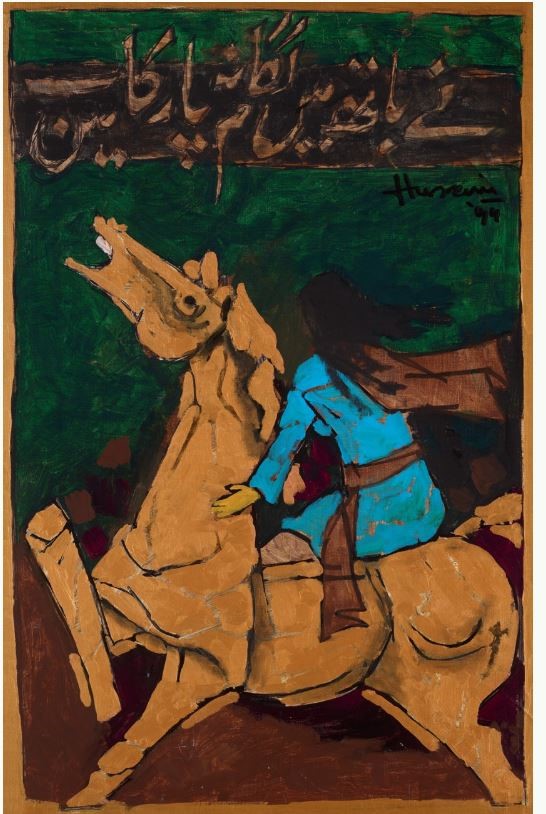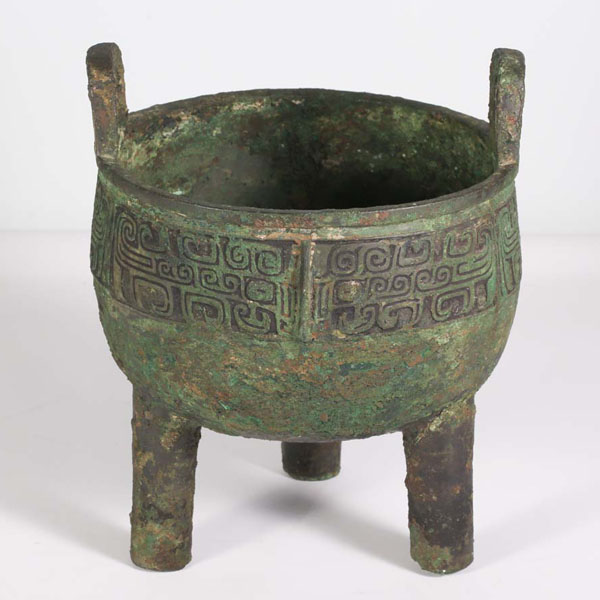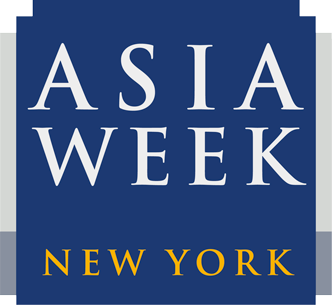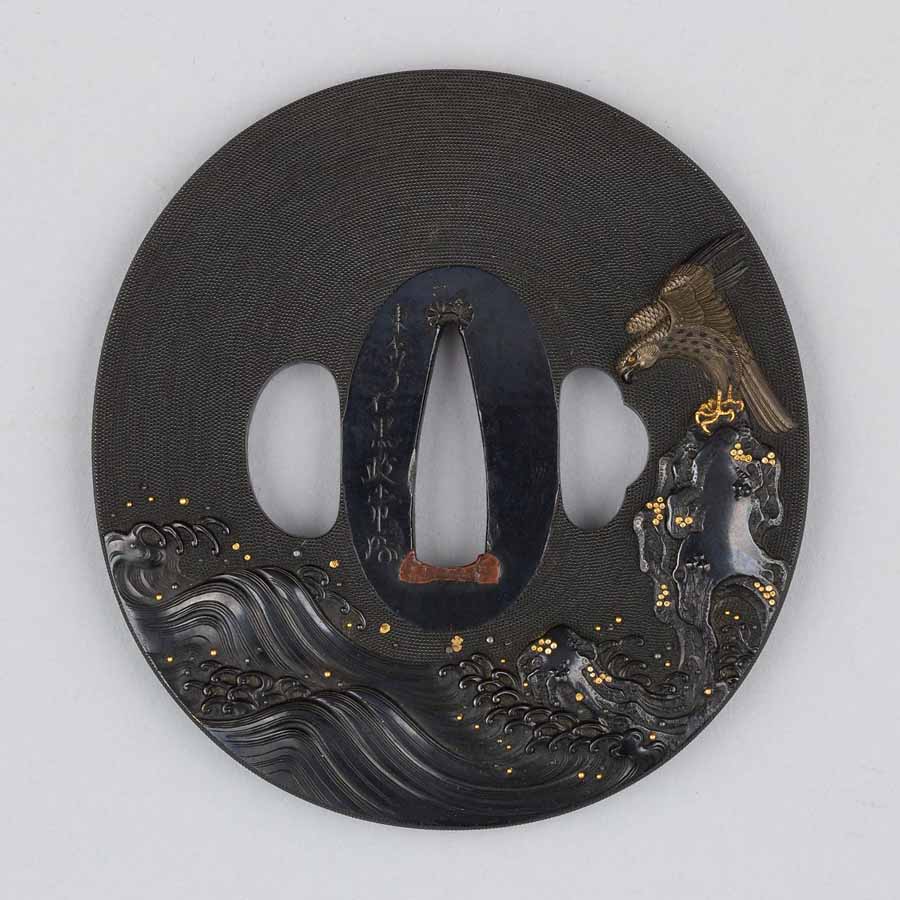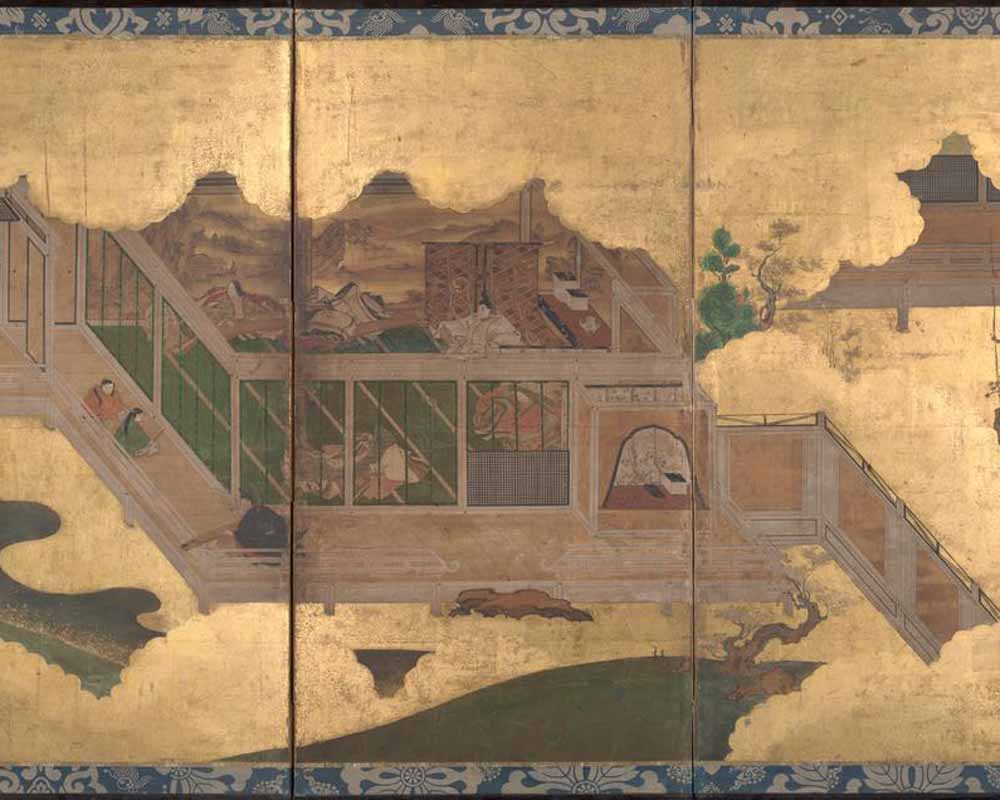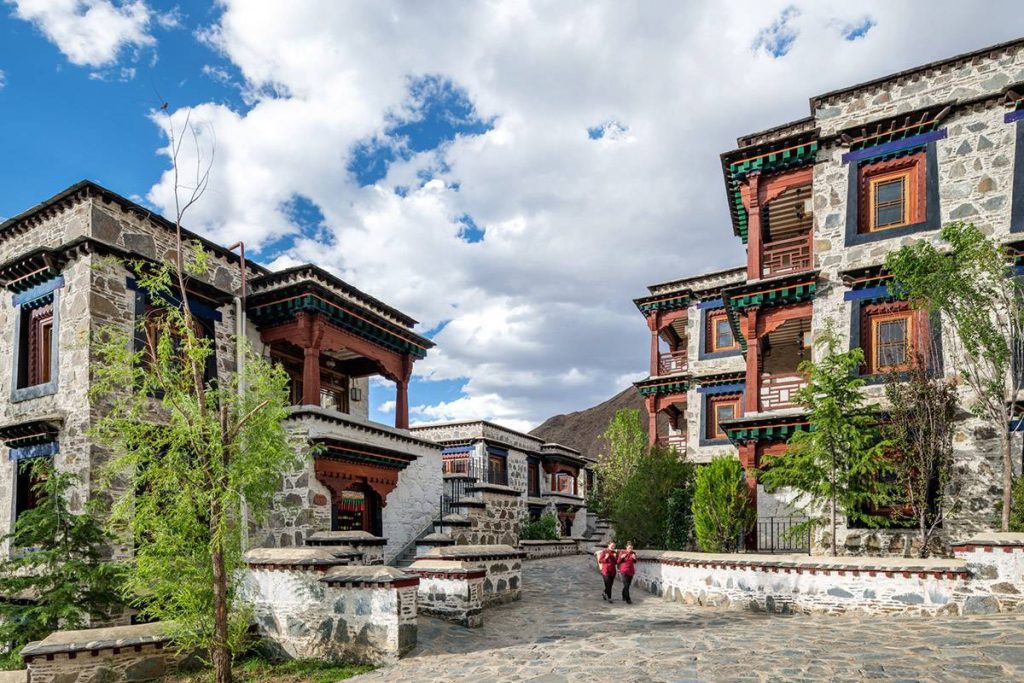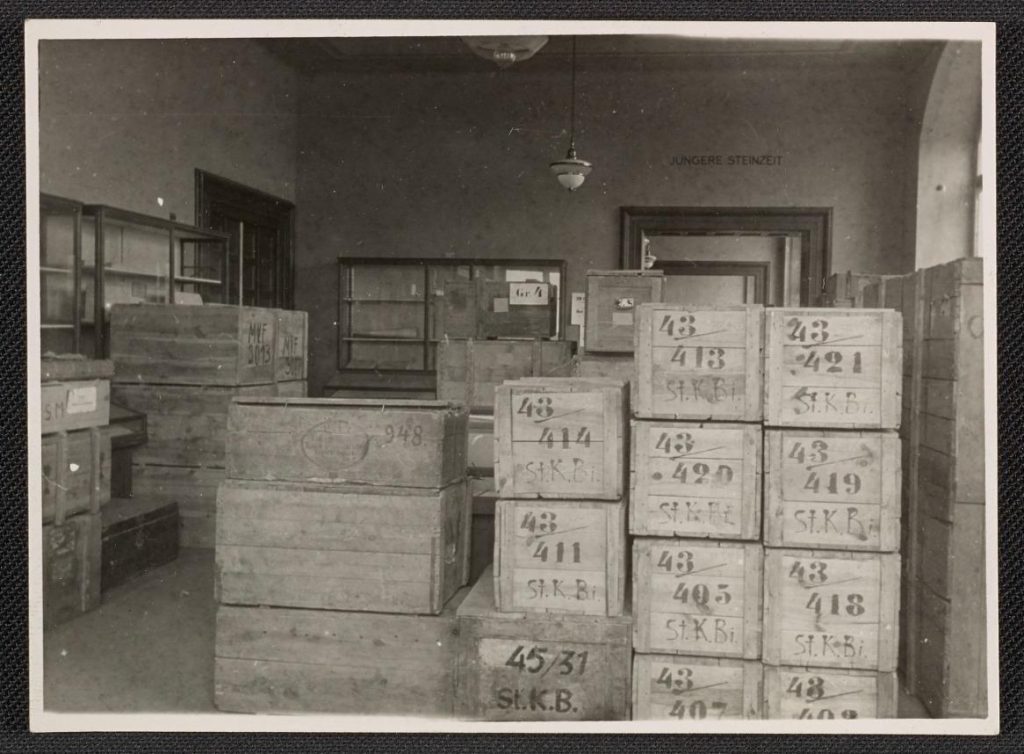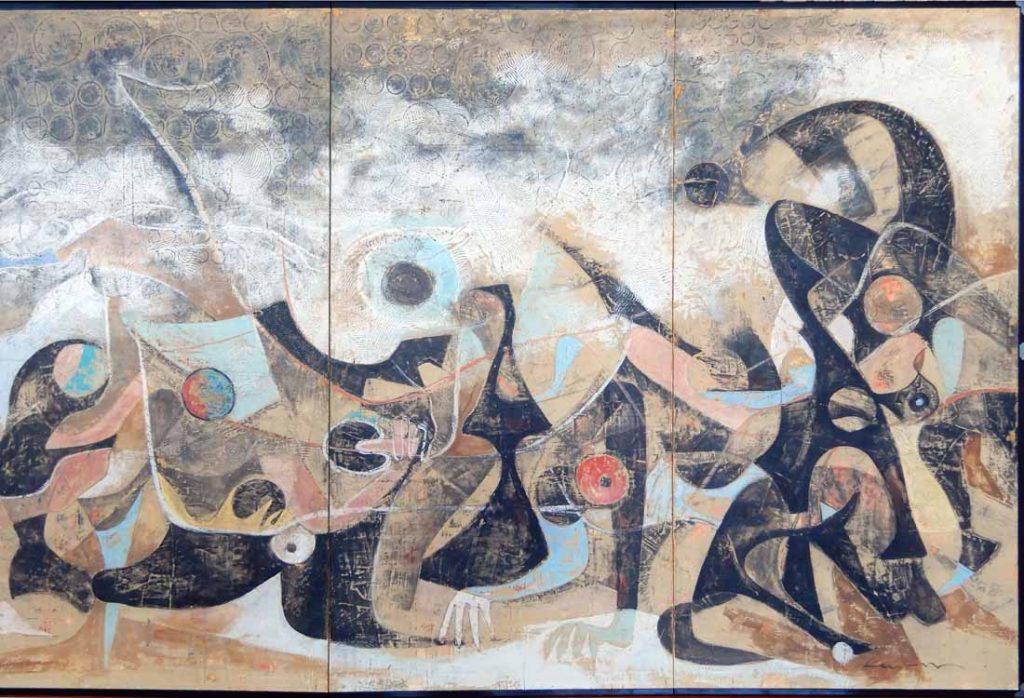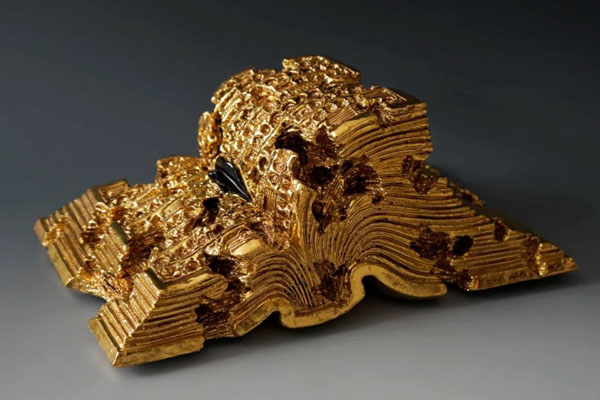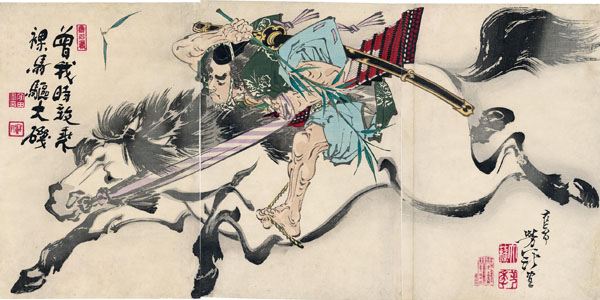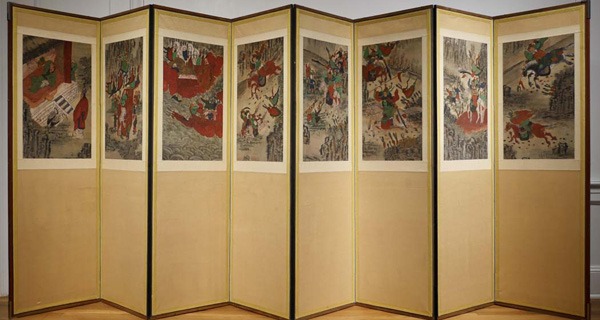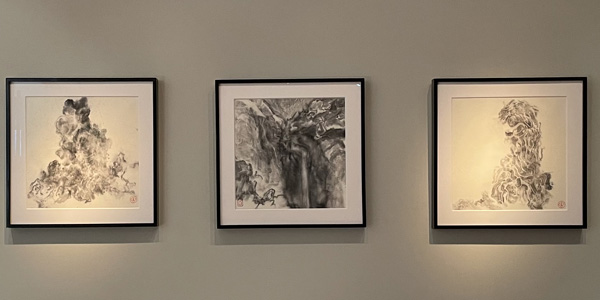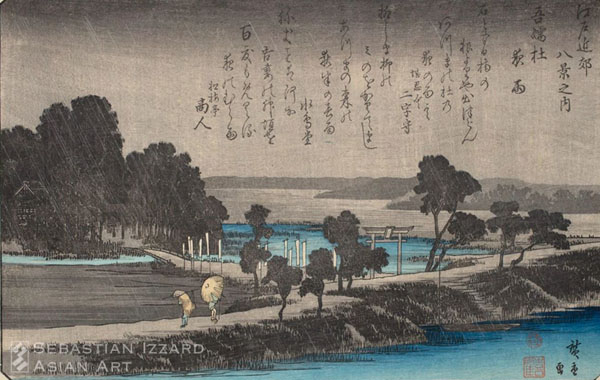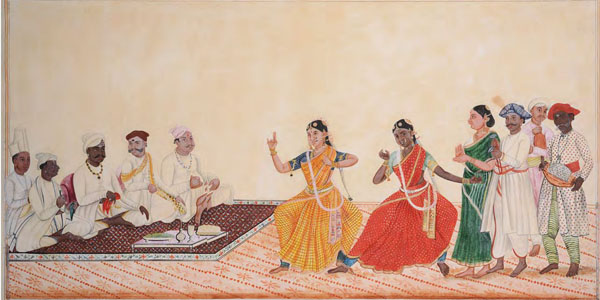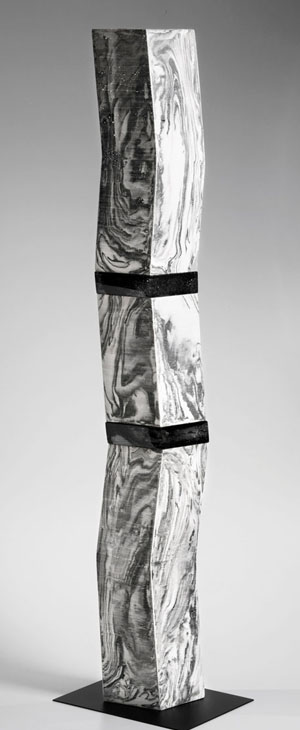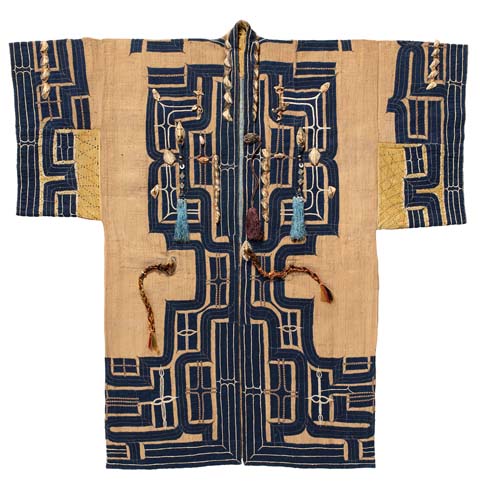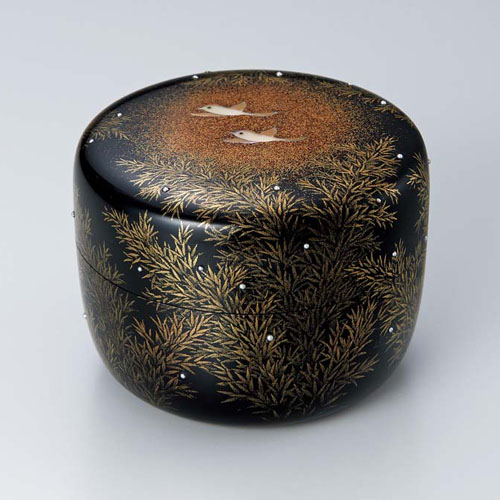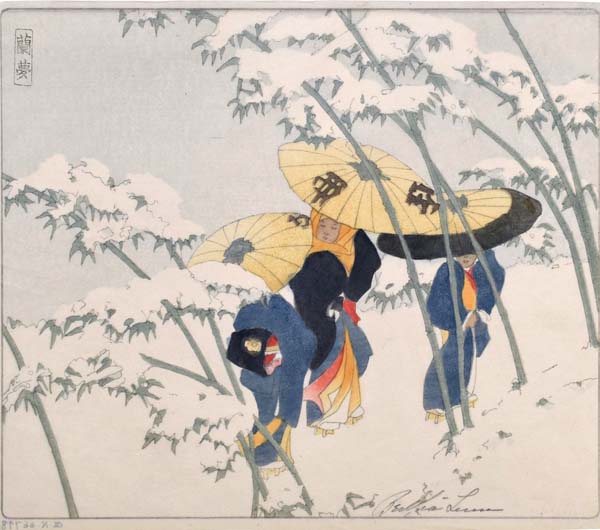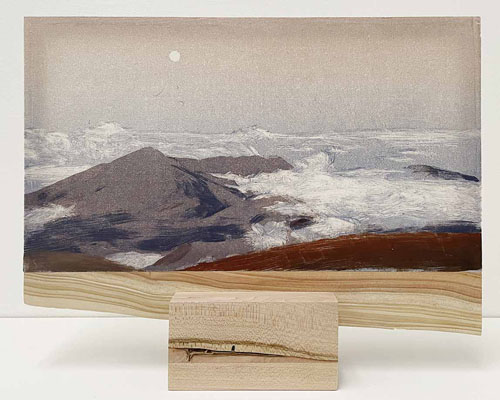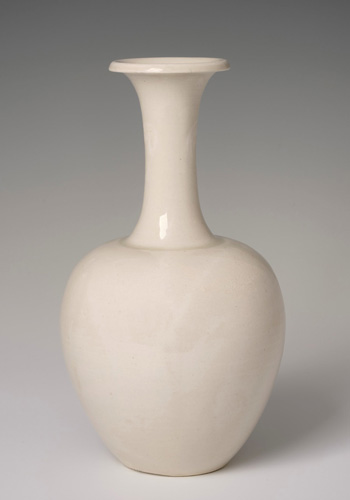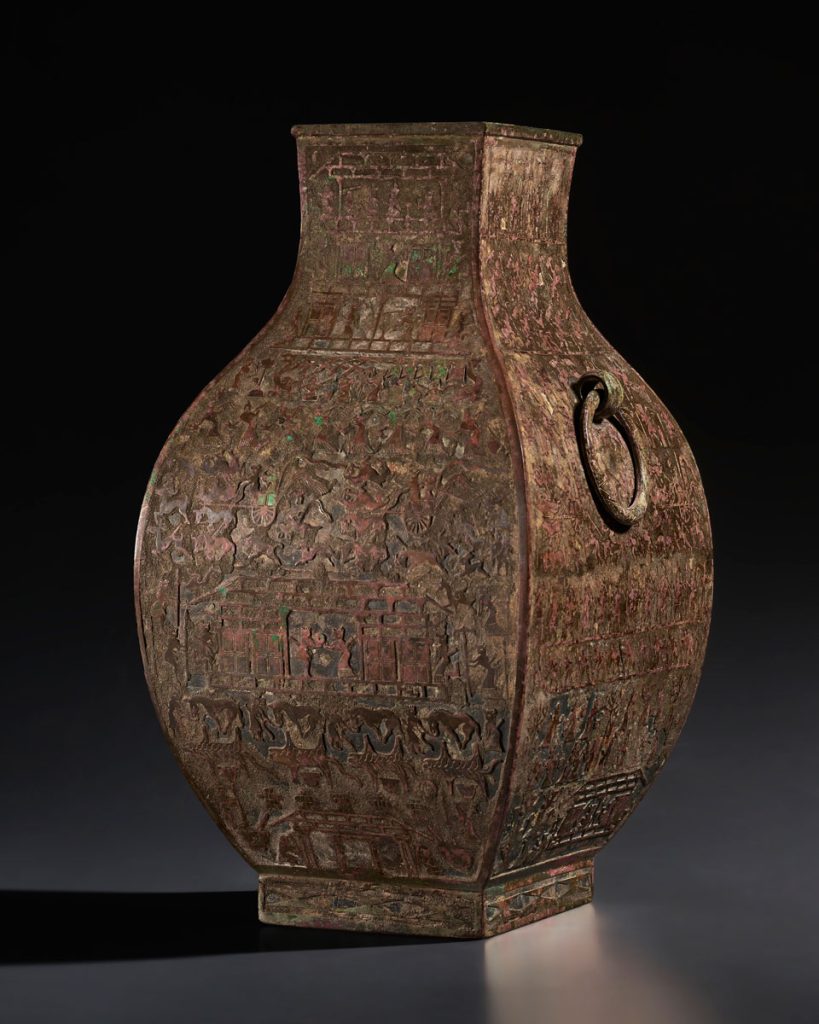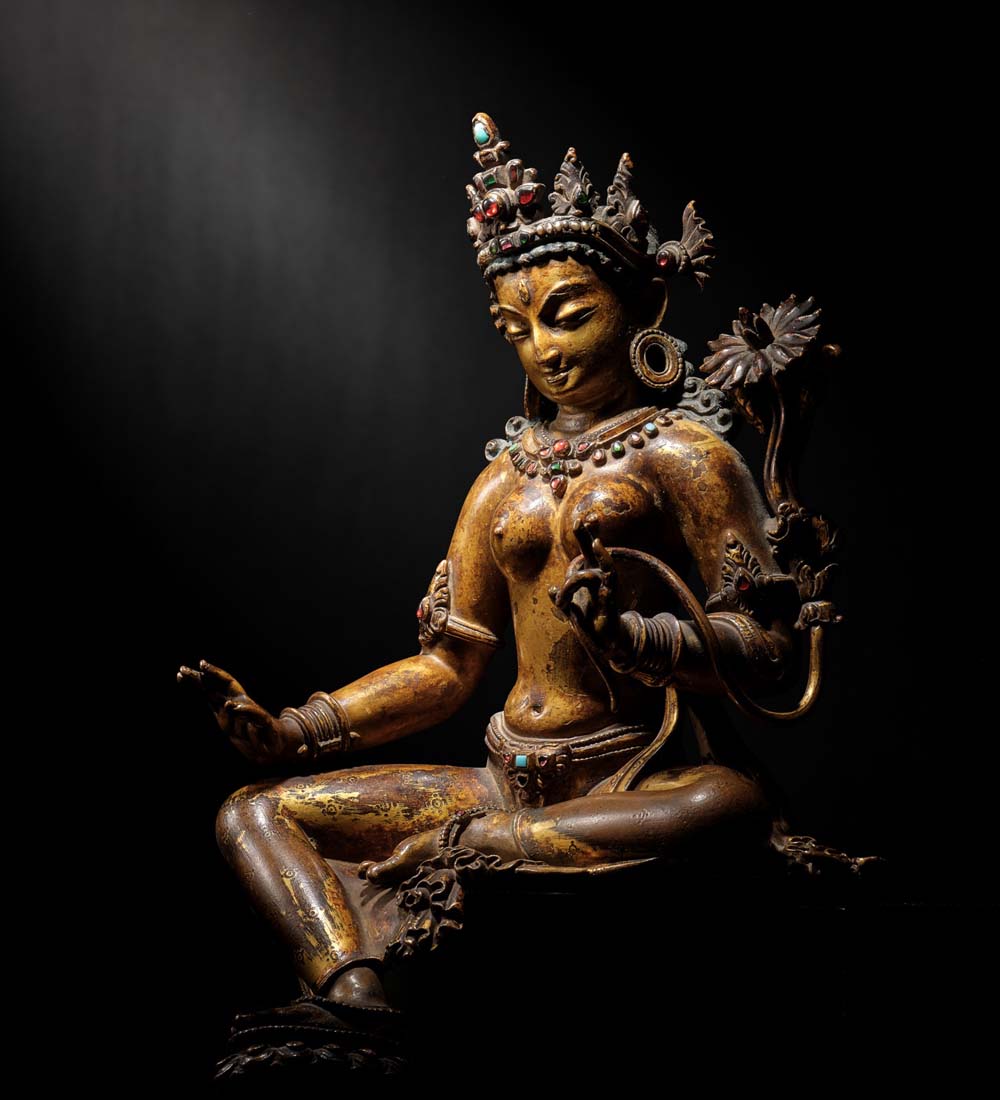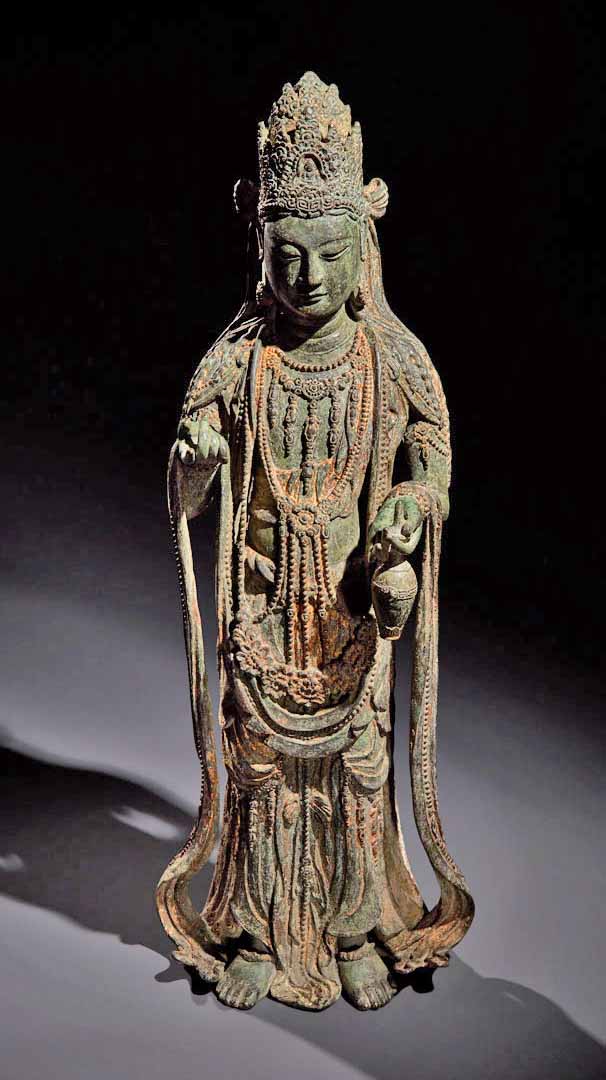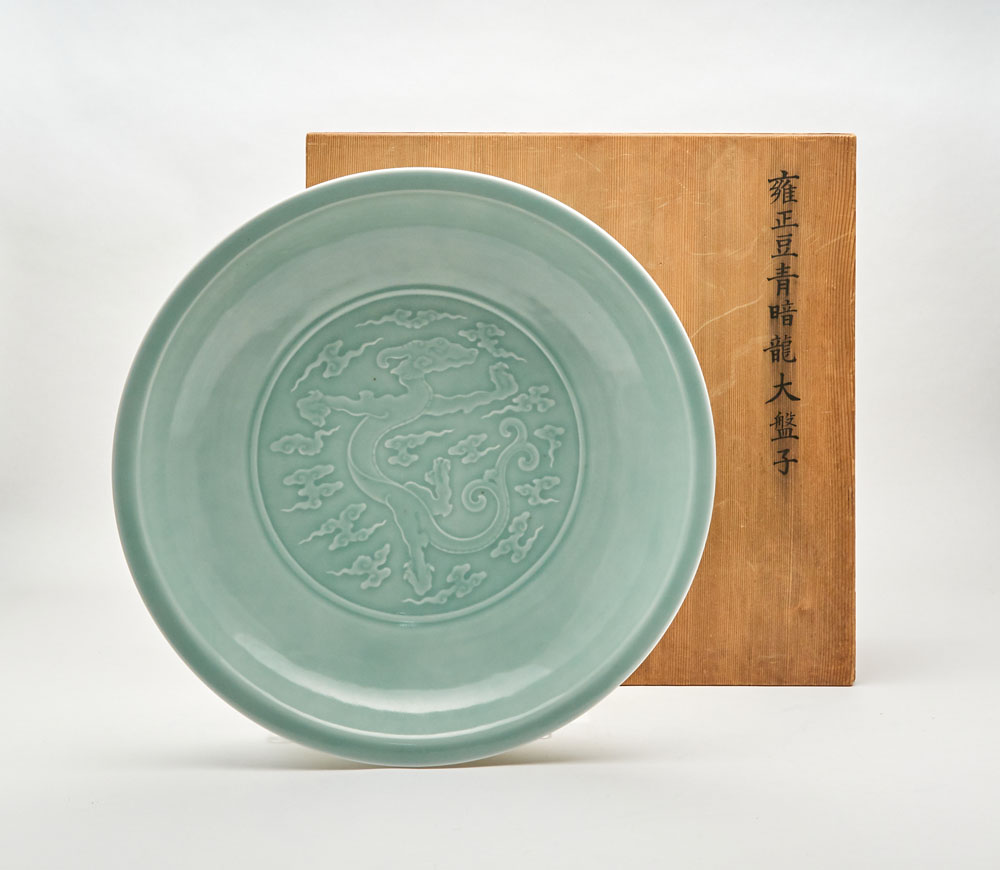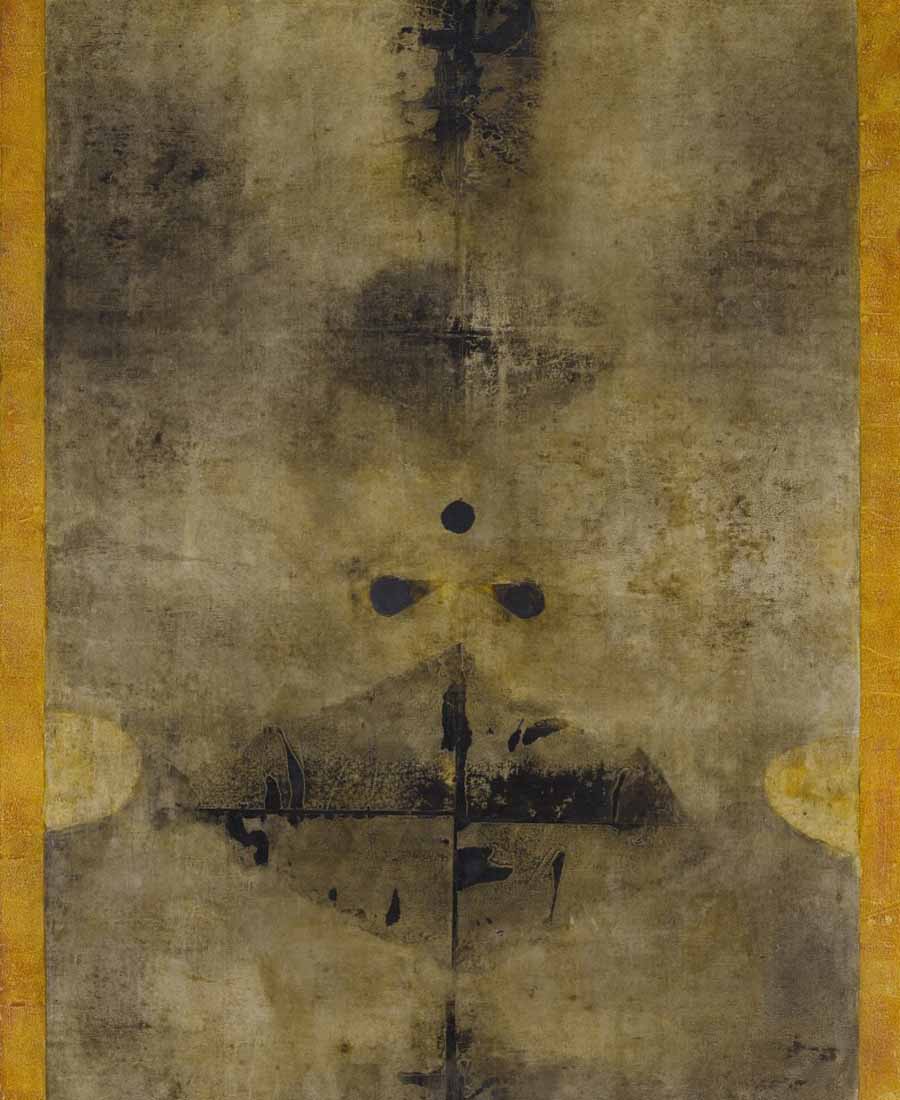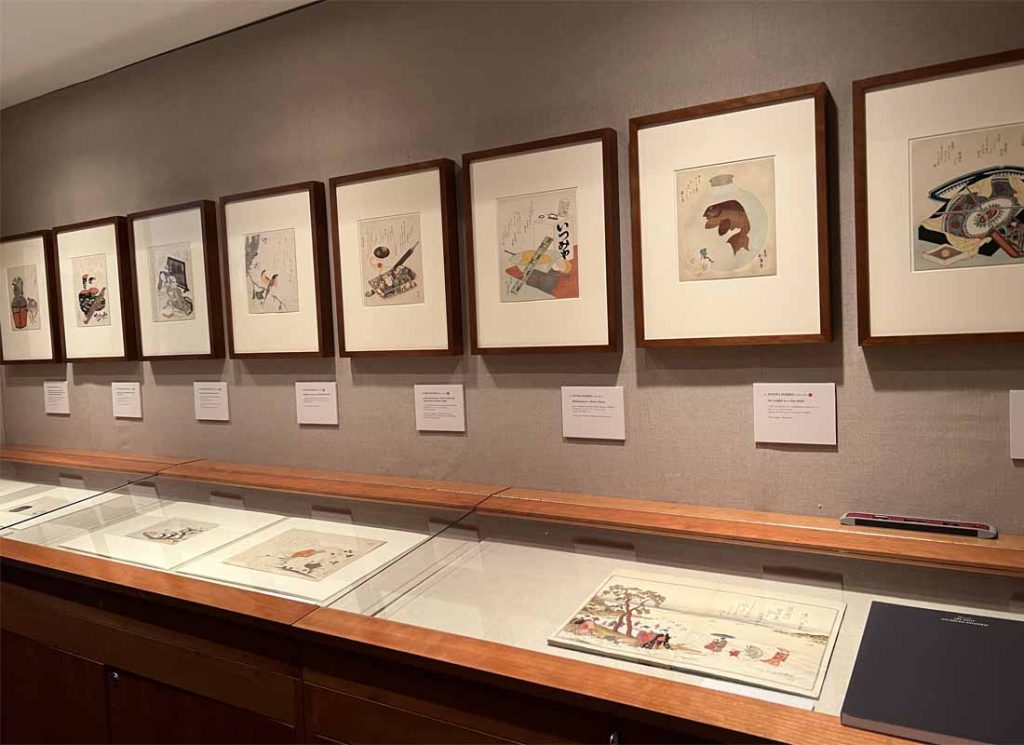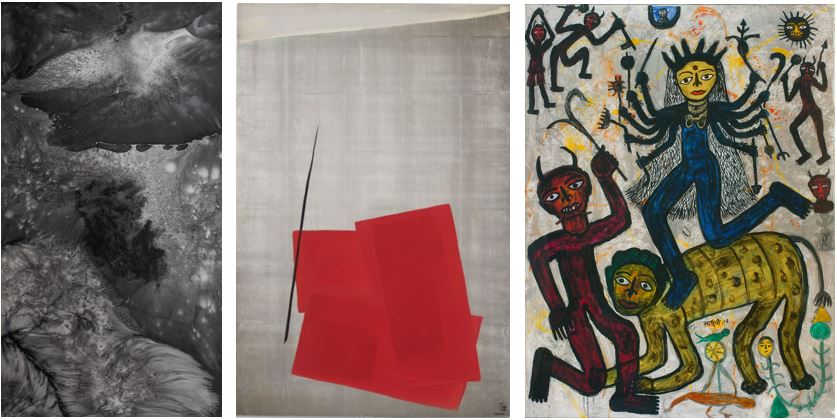L-R: Bingyi (born 1975), Sea of Stars, 2021, ink on xuan paper, INKstudio; Shinoda Toko (1913-2021), Innovation, sumi-ink, gouache and platinum leaf on canvas, Christie's; Madhvi Parekh (born 1942),
Durga II, 2006, acrylic on acrylic sheet (reverse painting), DAG
This season's Asia Week, which coincided with Women's History Month, included a plethora of works by women artists in a wide variety of materials, art forms, and traditions, and featured artists from all corners of Asia, as well as ones who live outside Asia. While this is in no way a comprehensive list, it will demonstrate how varied and rich the work of women artists is and provide entry points for further investigation.
The artists whose work is illustrated above are three painters who use traditional ideas and/or materials to create new kinds of imagery and express personal perspectives.
Looking back in time, works by women of earlier periods included several woodblock-print-makers, such as Bertha Lum, who were inspired by the Japanese tradition, at Scholten Japanese Art. Thomas Murray remarked that most, if not all, of the fine Indonesian textiles in his exhibition were made by women artisans, especially when they were to be used for ceremonial occassions.
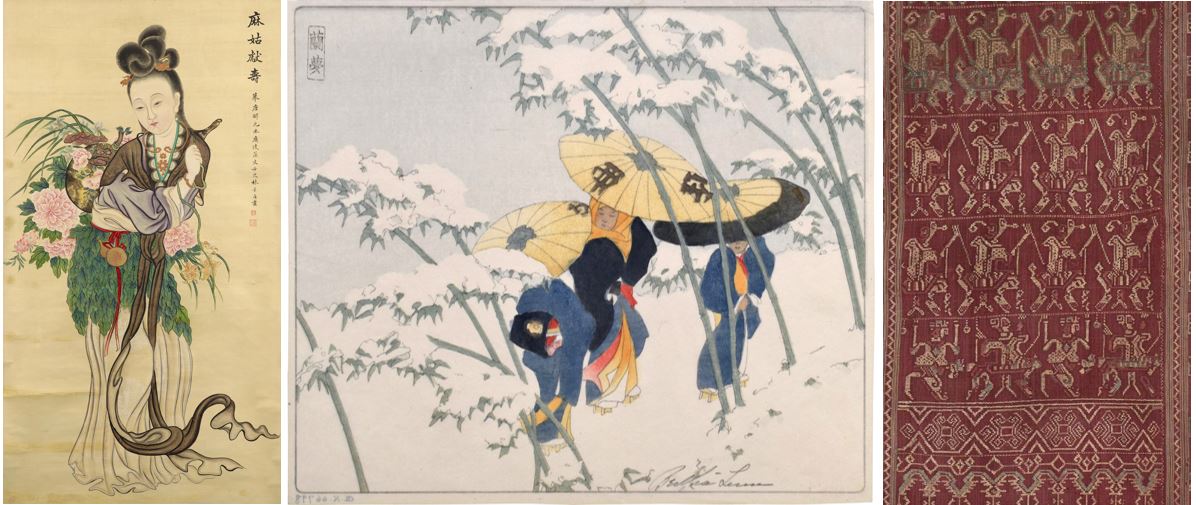
L-R: Lin Suzhen (19th century), Immortal Magu, ink and color on silk, Bonhams; Bertha Lum (1869-1954), Bamboo Road, ca. 1912, woodblock print, Scholten Japanese Art; Iban People, Borneo, Ceremonial Cloth, pua sungkit with Skulls and Dancing Figures, 19th century, cotton; supplementary weft wrapping, Thomas Murray
Visits to the exhibitions shown at DAG and Akar Prakar offered a wealth of works by women painters from South Asia, as both galleries made this the theme of this season's exhibitions. Similarly, the auctions of South Asian modern and contemporary art at Sotheby's and Christie's not only included numerous works by women artists, but many sold well above their estimates. DAG NY director Josheen Oberoi participated in a recorded discussion of this topic with Sarab Zavaleta, East Meets West at Asian Art Week in NYC & Women's History Month, which can be accessed here.
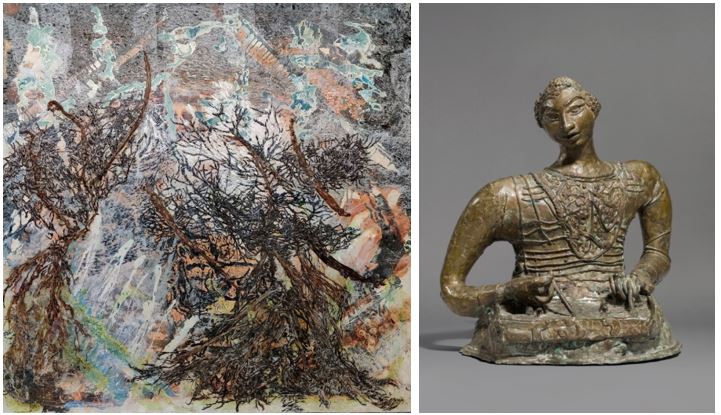
L-R: Jayashree Chakravarty (born 1956), Pulsating, 2020-2021, acrylic, oil, audiotape, plant bark, paper and synthetic adhesive on canvas, Akar Prakar; Meera Mukherjee (1923-1998), Santur Player, 1981, bronze, Sotheby's
Numerous contemporary women artists whose work was on view this week employed art forms other than painting. The materials they used ranged from clay to bamboo to metalwares to textiles.
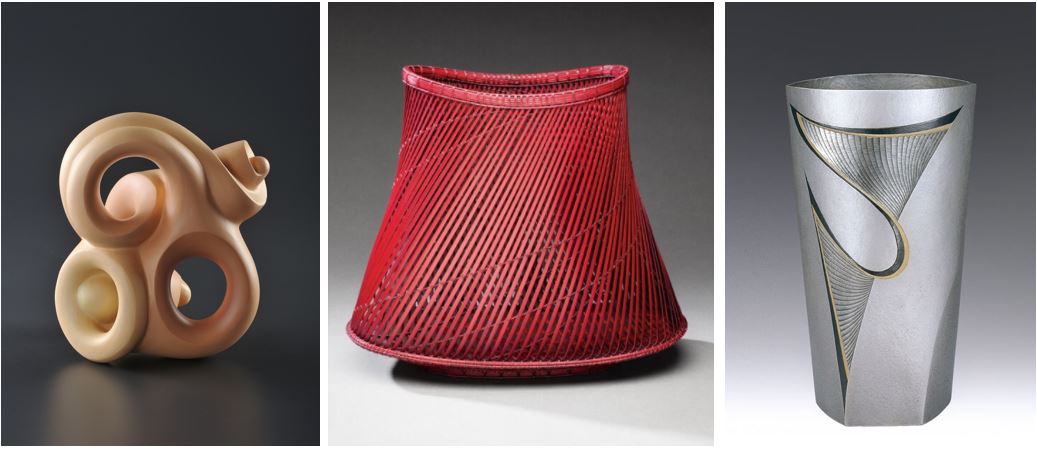
L-R: Shigematsu Ayumi (born 1958), Yellow Jomon, 2018, stoneware, Dai Ichi Arts LTD; Isohi Setsuko (born 1964), High Mountain, 2019, madake bamboo, rattan, TAI Modern; Otsuki Masako (b. 1943), Silver Vase Yo (Leap), 1998, silver metal carving with gold decoration and shakudo (alloy-copper, gold), Onishi Gallery
Whether rendered in two- or three-dimensional works, figural images that depict women can often have a self-portraiture quality or express some personal aspect of the artist's life. For example, Wonsook Kim has stated that her compositions are often influenced by her experiences in Korea and the United States, Iwasaki Eri's earlier job as a courtroom sketch artist resulted in her employment of intense emotions and humanity's dark side in her works, and Gogi Saroj Pal's self portrait shows a figure looking into a curtained future.

L-R: Wonsook Kim (born 1953), Words of Hope, 2016, oil on canvas, HK Art and Antiques; Iwasaki Eri (born 1968), Cotton Candy, 2019, mineral pigment, gofun, platinum paint on kozo paper mounted on wood panel, Christie's; Gogi Saroj Pal (born 1945), Self-Portrait, 1991, gouache on paper, DAG
The work of women artists is featured in several local museums. Presently on view at Korea Society is a display of the work of contemporary abstract textile artist Wonju Seo . The life and work of Elaine Ildan Choi is presented in a video available online by the Korean Cultural Center. The current exhibition, Japan: A History of Style at the Metropolitan Museum of Art, features a selection of Japanese contemporary metalwares by noted artists Osumi Yukie, Otsuki Masako, and Oshiyama Motoko. Rebel, Jester, Mystic, Poet: Contemporary Persians — The Mohammed Afkhami Collection at Asia Society includes the work of nine women artists, and their art is discussed in an online feature.
